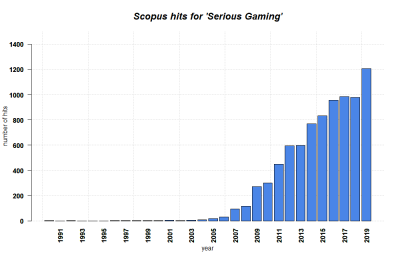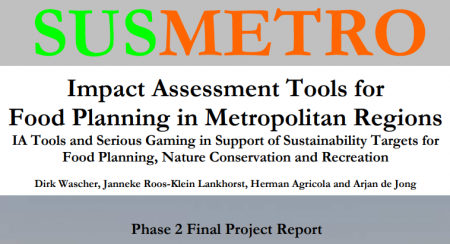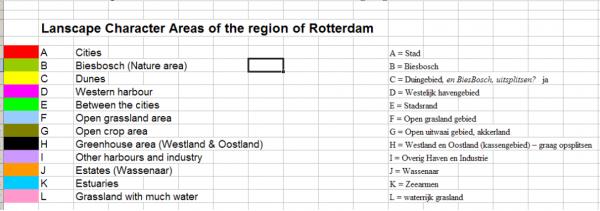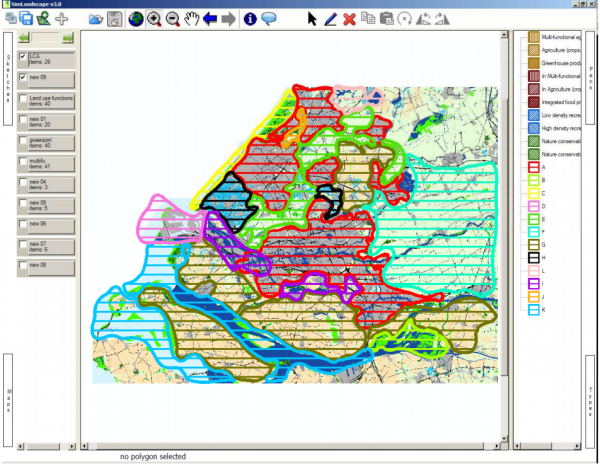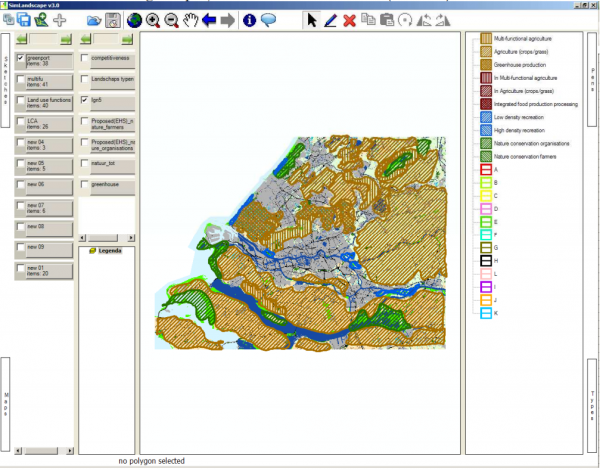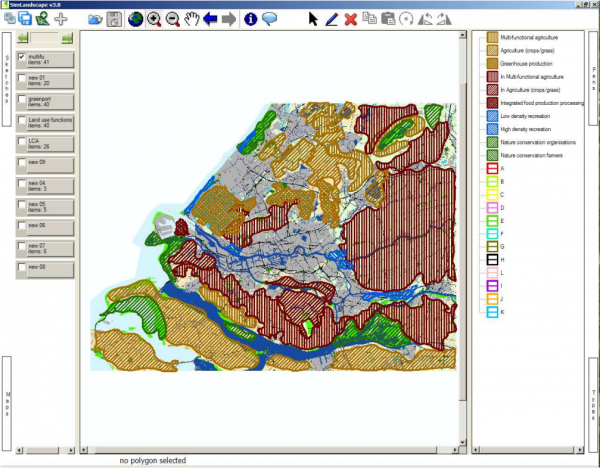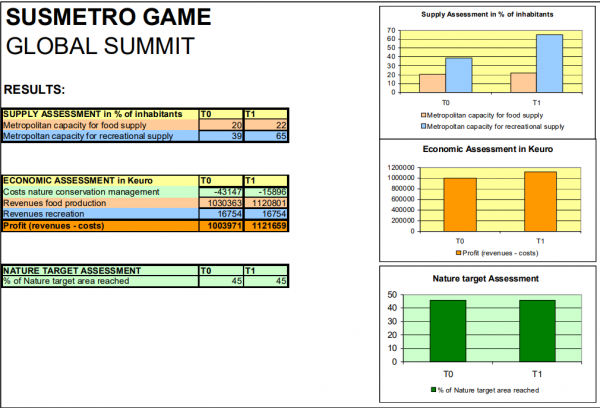Difference between revisions of "Serious Gaming"
AntoniaUcher (talk | contribs) |
|||
| (18 intermediate revisions by 5 users not shown) | |||
| Line 1: | Line 1: | ||
| − | [[File: | + | [[File:Qual dedu indi syst pres futu.png|thumb|right|[[Design Criteria of Methods|Method Categorisation:]]<br> |
| − | + | Quantitative - '''Qualitative'''<br> | |
| − | <br | + | '''Deductive''' - Inductive<br> |
| − | + | '''Individual''' - '''System''' - Global<br> | |
| − | + | Past - '''Present''' - '''Future''']] | |
| − | + | '''In short:''' Serious Gaming involves games, i.e. interactive analogous or digital formats, that harvest or create knowledge within a game setting with stakeholders. | |
| − | |||
| − | |||
| − | |||
| − | |||
| − | |||
| − | |||
| − | |||
| − | |||
| − | |||
| − | |||
| − | '''In short:''' Serious Gaming involves games, i.e. interactive | ||
== Background == | == Background == | ||
[[File:Serious gaming.png|400px|thumb|right|'''SCOPUS hits per year for Serious Gaming until 2019.''' Search term: 'serious gaming' in Title, Abstract, Keywords. Source: own.]] | [[File:Serious gaming.png|400px|thumb|right|'''SCOPUS hits per year for Serious Gaming until 2019.''' Search term: 'serious gaming' in Title, Abstract, Keywords. Source: own.]] | ||
| − | "Gaming has roots in systems analysis, operations research and decision sciences. The earliest use of gaming in support of decision making are in war games (...). They have a long history and originated as devices for planning military operations (...). The use of gaming in a political-military-security context was subsequently transferred to a non-military context, hence the interest in gaming simulation by not only computer scientists and game designers, but also decision makers, public policy makers, engineers and scientists | + | "Gaming has roots in systems analysis, operations research and decision sciences. The earliest use of gaming in support of decision making are in war games (...). They have a long history and originated as devices for planning military operations (...). The use of gaming in a political-military-security context was subsequently transferred to a non-military context, hence the interest in gaming simulation by not only computer scientists and game designers, but also decision makers, public policy makers, engineers and scientists" (Savic et al. 2016, p.457). |
| − | Serious Games are a form of gaming and thus located within the field of simulation and gaming research, alongside other aspects such as computer simulations, agent-based modeling, role-plays and virtual reality (2). | + | Serious Games are a form of gaming and thus located within the field of simulation and gaming research, alongside other aspects such as computer simulations, agent-based modeling, role-plays and virtual reality (2). '''"The notion of serious gaming was introduced by Abt (1970), who established how simulation games could be used for education, decision making and for public policy making."''' (Savic et al. 2016, p. 457, emphasis added). Since Abt's primary work, the method has found its way into several fields, including business, corporate, healthcare, government, military (among these the RAND corporation who invented the [[Delphi]] Method) and science (1, 2, 8). However, its primary usage is for education, training and conflict resolution (1, 5). |
== What the method does == | == What the method does == | ||
| − | * "[A game] is almost impossible to define, but we recognize one when we see it." writes Crookall (2), citing the philosopher Wittgenstein. This statement highlights | + | * "[A game] is almost impossible to define, but we recognize one when we see it." writes Crookall (2), citing the philosopher Wittgenstein. This statement highlights that there is a wide, unanimous range of definitions for the term 'game', and subsequently for the term 'Serious Gaming'. However, most of the existing definitions agree upon the aspect that "(...) they are games used for purposes other than mere entertainment." (Savic et al. 2016, p.457). Different from most popular video games, entertainment is not the primary goal of a (serious) game, but rather a means to an end (4, 5, 8). '''A Serious Game pursues a specific purpose that lies predominantly in training, educating and achieving behavioral change in the players''' (4, 5). Specific goals can be, among others, raising attention, challenging prejudgments, communicating political statements or merely offering information, all of which shall impact the players' lives beyond the gaming experience itself (4, 5). For decision makers and planners as well as scientists, Serious Games can be helpful tools since they "(...) provide a means of identifying and evaluating the consequences of alternative plans and policies." (Mitgutsch & Alvarado 2012, p.11). |
<br/> | <br/> | ||
| − | [[File:Serious Gaming Types.png|800px|thumb|center|'''Different types of Serious Games, | + | [[File:Serious Gaming Types.png|800px|thumb|center|'''Different types of Serious Games, distinguished based on their purpose and field of application.''' One of the columns indicates the types of Serious Games used for Science and Research purposes. Source: The 'Games Taxonomy' by Sawyer and Smith (2008), available [http://edutechwiki.unige.ch/en/Serious_game here].]] |
<br/> | <br/> | ||
| − | * Games differ from simulations. While a simulation is a "simplified, dynamic and accurate model of reality" (Coovert et al. 2017, p.5 citing Adroitly), a game is a " | + | * Games differ from simulations. While a simulation is a "simplified, dynamic and accurate model of reality" (Coovert et al. 2017, p.5 citing Adroitly), a game is a "fictitious or artificial situation in which the player is expected to perform" (ibid). The Serious Game may be seen as a combination of both forms: the simulation model no longer focuses on system analysis, but instead serves a learning purpose, adds the player as an actor amongst the other stakeholders, allows for interactive engagement with the model and is used in several different groups (3). |
* While games meant something different when Abt first defined the term, today, a 'game' mostly refers to a computer technology or video graphics based experience (2, 5). '''A Serious Game is a "playful environment"''' (Mitgutsch & Alvarado 2012, p.122) '''and more than the hardware or software it is based on, but rather the overall experience the player has while interacting with it''' (5). Relevant elements of a Serious Game include its purpose, its mechanics and rule-sets, fiction and narrative, its aesthetics and framing and its content (4). Also, debriefing at the end of the gaming experience (i.e. summarizing and reflecting upon it) is a crucial yet often neglected aspect of (Serious) Gaming (2). | * While games meant something different when Abt first defined the term, today, a 'game' mostly refers to a computer technology or video graphics based experience (2, 5). '''A Serious Game is a "playful environment"''' (Mitgutsch & Alvarado 2012, p.122) '''and more than the hardware or software it is based on, but rather the overall experience the player has while interacting with it''' (5). Relevant elements of a Serious Game include its purpose, its mechanics and rule-sets, fiction and narrative, its aesthetics and framing and its content (4). Also, debriefing at the end of the gaming experience (i.e. summarizing and reflecting upon it) is a crucial yet often neglected aspect of (Serious) Gaming (2). | ||
* '''The term 'serious' is debated, but reflects the usage of a video game for purposes other than pure entertainment''' (2). According to Abt, the term relates to "matters of great interest and importance, raising questions not easily solved, and having important possible consequences" (Abt 1970, p.10). | * '''The term 'serious' is debated, but reflects the usage of a video game for purposes other than pure entertainment''' (2). According to Abt, the term relates to "matters of great interest and importance, raising questions not easily solved, and having important possible consequences" (Abt 1970, p.10). | ||
| Line 36: | Line 25: | ||
== Strengths & Challenges == | == Strengths & Challenges == | ||
| − | + | '''In general, positive impacts of games include analytical and spatial skills, strategic planning skills, better orientation in three-dimensional spaces, psychomotor skills, learning capabilities and more''' (8). When applied as a tool for planning and education, further advantages include: | |
| − | + | * Serious Gaming, compared to purely technical simulations, better acknowledges socio-technical challenges of complex systems (1). | |
| − | + | * "Serious games combine the analytic and questioning concentration of the scientific viewpoint with the intuitive freedom and rewards of imaginative, artistic acts" (Mitgutsch & Alvarado 2012, p.12) | |
| − | + | * Games are a cost-effective and motivating form of education and training and allow players to receive feedback on their actions. They allow evaluators to easily assess player performance and offer game developers more [[Glossary|creativity]] without the risks associated with implementing simulated decisions in the real world (4). | |
| − | + | ||
| − | + | '''More specifically, Serious Games may be an effective tool for research purposes''' (especially for research teams): | |
| − | + | * they offer flexible and consistent data gathering, | |
| − | + | * they enable teams to easily distribute new information within the team and provide feedback to the team members' reactions to this information, and | |
| − | + | * they facilitate debriefing (all from (5)). | |
| − | * On the negative side, the simplified representation of the analyzed issue of the Serious Game - while serving an educational purpose | + | However, there is currently still a lack of research on whether these alleged advantages really translate into practice (see Outlook). |
| + | |||
| + | * On the negative side, the simplified representation of the analyzed issue of the Serious Game - while serving an educational purpose - can counteract a practical usage for solving real problems (1). | ||
* As Khaled & Vasalou (2014) highlight, Serious Games may impose a barrier for participatory design. They state that participants do not only need to be familiar with the topic at hand, but also possess gaming literacy, which may differ between user groups. Especially with more complex digital gaming applications, this may be an issue. | * As Khaled & Vasalou (2014) highlight, Serious Games may impose a barrier for participatory design. They state that participants do not only need to be familiar with the topic at hand, but also possess gaming literacy, which may differ between user groups. Especially with more complex digital gaming applications, this may be an issue. | ||
| − | [[ | + | == Normativity == |
| + | * Serious Gaming may be built upon other methodological approaches, such as [[Geographical Information Systems]] or forms of [[System Analysis]], including [[Social Network Analysis]] or [[System Thinking & Causal Loop Diagrams|Causal Loop Diagrams]]. | ||
| + | * Serious Gaming may be used as a [[Transdisciplinarity|transdisciplinary]] research method in stakeholder workshops. Thus, all notions of normativity in transdisciplinary research may apply, such as conflicting roles and challenges in problem framing. | ||
| + | * It should be noted that the educational purpose of Serious Games attributes an important role of the method in the normative field of Sustainability Science. The information and framing that are part of the game serve a specific purpose, which may represent unanimous positions within the sustainability community, but may as well inflict opposing and harmful moral positions. The knowledge transported within a Serious Game should be fact-based, whereas the scope and direction of framing depends on the underlying purpose of the game which is contributed by the originator of the game (a company, an NGO, a government, an academic actor...). No matter the specific framing, this should be reflected upon when creating the game and assessing its effects (see (3)). | ||
| − | |||
| − | |||
| − | |||
| − | |||
== Outlook == | == Outlook == | ||
* As a scientific method, Serious Gaming has existed for 50 years now, but there is still a lack of a homogeneous usage of the term, with common alternatives being 'digital learning games', 'game-based learning' or 'edutainment games', among others (2, 8). However, as Crookall (2) hopes, this ambiguity should not halt the further development of the method. He claims that the field of simulation and gaming may be moving towards being a full scientific discipline rather than only a set of methodological approaches (2). While the usage of Serious Games is currently widespread across different disciplines, a suggested name for the discipline-to-be is "Game Science" (5). | * As a scientific method, Serious Gaming has existed for 50 years now, but there is still a lack of a homogeneous usage of the term, with common alternatives being 'digital learning games', 'game-based learning' or 'edutainment games', among others (2, 8). However, as Crookall (2) hopes, this ambiguity should not halt the further development of the method. He claims that the field of simulation and gaming may be moving towards being a full scientific discipline rather than only a set of methodological approaches (2). While the usage of Serious Games is currently widespread across different disciplines, a suggested name for the discipline-to-be is "Game Science" (5). | ||
* A relevant issue is the additional lack of research on the actual effectiveness of simulations and games in the respective fields of application (2, 4, 8). More research should be done in this field to help further the methodological development of Serious Gaming. | * A relevant issue is the additional lack of research on the actual effectiveness of simulations and games in the respective fields of application (2, 4, 8). More research should be done in this field to help further the methodological development of Serious Gaming. | ||
| − | * | + | * The decreased cost of game development, higher flexibility of the needed tools and the increased technological fidelity of the games have solved previous issues of games as a research tool (5). In 2010, it was mentioned that research contributions on Serious Gaming had been increasing lately (2). One may further assume that the ongoing monetary growth of the video game industry, the current diversification of game development through easier access to development tools, improvements in societal gaming literacy and acceptance for video games suggest a promising future for both the medium itself and its application in the contexts described in this article. |
| + | |||
| + | == An exemplary study == | ||
| + | [[File:Serious Gaming - exemplary study - Wascher et al. 2010 - Title.png|450px|frameless|center|Serious Gaming - exemplary study - Wascher et al. 2010 - Title]]<br> | ||
| + | '''The SUSMETRO project was a Serious Gaming project in the field of land-use planning''' that is described as follows in Wascher et al. 2010, p.22 (see References): | ||
| + | "By offering decision support tools such as maps, figures on sustainability and impact scenarios for stakeholders of metropolitan regions, SUSMETRO facilitates and enables evidence-based decision making by means of a ‘serious game’." More specifically, stakeholders were asked to decide for agricultural innovations and land-use types for specific areas in their respective metropolitan regions, and the game provided feedback on the outcomes of these land-use changes also on aspects such as recreational and nature conservation functions. In the end, the stakeholders were supposed to find a mix of agricultural land-use types that has the best outcome on the triple bottom-line of people, planet, and profit. | ||
| + | |||
| + | Technically, '''the SUSMETRO game was based on Excel and an adapted ArcGIS software which ran on a large touch-sensitive computer screen''' (Maptable). It was assisted by a facilitator and could be played by maximum 15 persons at once. On the Maptable, maps were displayed, based on which the stakeholders selected a region that represented their respective urban region. Then, first, they had to decide on what the region looks like now by selecting and defining different types of 'Landscape Character Areas', which were drawn onto the map. | ||
| + | <br> | ||
| + | [[File:Serious Gaming - exemplary study - Wascher et al. 2010 - Landscape Character Areas.png|600px|thumb|center|'''The defined 'Landscape Character Areas' that defined the Rotterdam region in the SUSMETRO workshop.''' Source: Wascher et al. 2010, p.40]] | ||
| + | <br> | ||
| + | [[File:Serious Gaming - exemplary study - Wascher et al. 2010 - Landscape Character Areas Map.png|600px|thumb|center|'''The identified 'Landscape Character Areas' on the map.''' Source: Wascher et al. 2010, p.41]] | ||
| + | <br> | ||
| + | In Excel, then, the stakeholders could learn about four general types of 'Land Use Functions' with sub-types, which were pre-defined definitions of different kinds of land use, such as 'conventional agriculture (greenhouse production)', or 'recreation (low density recreation)'. Each definition entailed values and assumptions about these kinds of land-use, which could be discussed and adapted by the stakeholders. | ||
| + | <br> | ||
| + | [[File:Serious Gaming - exemplary study - Wascher et al. 2010 - Land Use Functions Map 1.png|600px|thumb|center|'''The Land Use Functions Map of the current state of the Rotterdam region.''' Source: Wascher et al. 2010, p.42]] | ||
| + | <br> | ||
| + | The Land Use Functions for the current landscape could not be changed, but the '''stakeholders could subsequently draw their own distribution of land-use functions onto the map''' based on discussions about the potential, required, or desirable development of the area. These Land Use Functions were meant to provide more detailed information than the initial Landscape Character Areas, and more data to work with for the subsequent evaluation. | ||
| + | <br> | ||
| + | [[File:Serious Gaming - exemplary study - Wascher et al. 2010 - Land Use Functions Map 2.png|600px|thumb|center|'''The Land Use Functions map for the future as projected based on stakeholder input.''' Source: Wascher et al. 2010, p.43]] | ||
| + | <br> | ||
| + | '''Based on these drawings, ArcGIS and Excel could be used to calculate the consequences of these changed land-use types for the respective areas.''' | ||
| + | <br> | ||
| + | [[File:Serious Gaming - exemplary study - Wascher et al. 2010 - Assessment Results.png|600px|thumb|right|'''The results of the assessment of the current (T0) and projected (T1) land use in the Rotterdam region, with regards to the the three areas of food and recreational supply, profits, and nature area.''' Source: Wascher et al. 2010, p.44]] | ||
| + | <br> | ||
| + | The results from these calculations were displayed and provided information on | ||
| + | * which % of the population in the region could be fed with the available or planned agricultural areas, | ||
| + | * whether the amount of recreational space is sufficient for the local residents, | ||
| + | * the profit gained in the region, based on the revenues from agriculture and recreation, substracted by the costs of nature management, and | ||
| + | * what % of the intended remaining nature area could be reached with the planned land-use. | ||
| + | |||
| + | Although the researchers discussed some shortcomings of their gaming approach, both technologically and methodologically, they highlighted good interaction by the stakeholders and helpful results for policy planning in the region. | ||
== Key publications == | == Key publications == | ||
| Line 91: | Line 112: | ||
(9) Khaleda, R. Vasalou. 2014. ''Bridging Serious Games and Participatory Design''. Preprint submitted to Child Computer Interaction. | (9) Khaleda, R. Vasalou. 2014. ''Bridging Serious Games and Participatory Design''. Preprint submitted to Child Computer Interaction. | ||
| + | |||
| + | == Further Information == | ||
| + | * The ESPREssO project, which included a board game on disaster risk reduction and climate change adapation, is described [https://www.dkkv.org/de/serious-gaming/ here] (German language). | ||
| + | * [https://www.rwth-aachen.de/cms/root/Studium/Lehre/Digitalisierungsstrategie-der-Lehre/Blended-Learning-Formate/~oiav/Serious-Games/ Some information] (also in German) on two serious gaming projects by RWTH Aachen on the topics of managing a car manufacturer and for medicine training. | ||
---- | ---- | ||
[[Category:Qualitative]] | [[Category:Qualitative]] | ||
Latest revision as of 15:22, 22 November 2024

Quantitative - Qualitative
Deductive - Inductive
Individual - System - Global
Past - Present - Future
In short: Serious Gaming involves games, i.e. interactive analogous or digital formats, that harvest or create knowledge within a game setting with stakeholders.
Contents
Background
"Gaming has roots in systems analysis, operations research and decision sciences. The earliest use of gaming in support of decision making are in war games (...). They have a long history and originated as devices for planning military operations (...). The use of gaming in a political-military-security context was subsequently transferred to a non-military context, hence the interest in gaming simulation by not only computer scientists and game designers, but also decision makers, public policy makers, engineers and scientists" (Savic et al. 2016, p.457).
Serious Games are a form of gaming and thus located within the field of simulation and gaming research, alongside other aspects such as computer simulations, agent-based modeling, role-plays and virtual reality (2). "The notion of serious gaming was introduced by Abt (1970), who established how simulation games could be used for education, decision making and for public policy making." (Savic et al. 2016, p. 457, emphasis added). Since Abt's primary work, the method has found its way into several fields, including business, corporate, healthcare, government, military (among these the RAND corporation who invented the Delphi Method) and science (1, 2, 8). However, its primary usage is for education, training and conflict resolution (1, 5).
What the method does
- "[A game] is almost impossible to define, but we recognize one when we see it." writes Crookall (2), citing the philosopher Wittgenstein. This statement highlights that there is a wide, unanimous range of definitions for the term 'game', and subsequently for the term 'Serious Gaming'. However, most of the existing definitions agree upon the aspect that "(...) they are games used for purposes other than mere entertainment." (Savic et al. 2016, p.457). Different from most popular video games, entertainment is not the primary goal of a (serious) game, but rather a means to an end (4, 5, 8). A Serious Game pursues a specific purpose that lies predominantly in training, educating and achieving behavioral change in the players (4, 5). Specific goals can be, among others, raising attention, challenging prejudgments, communicating political statements or merely offering information, all of which shall impact the players' lives beyond the gaming experience itself (4, 5). For decision makers and planners as well as scientists, Serious Games can be helpful tools since they "(...) provide a means of identifying and evaluating the consequences of alternative plans and policies." (Mitgutsch & Alvarado 2012, p.11).
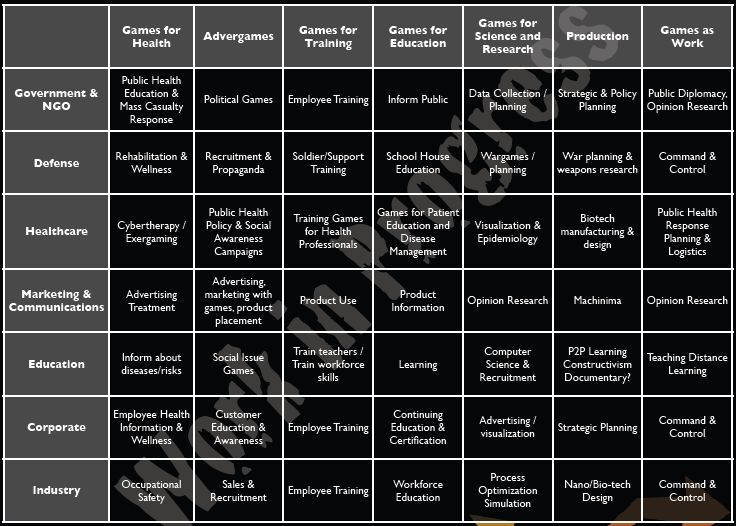
- Games differ from simulations. While a simulation is a "simplified, dynamic and accurate model of reality" (Coovert et al. 2017, p.5 citing Adroitly), a game is a "fictitious or artificial situation in which the player is expected to perform" (ibid). The Serious Game may be seen as a combination of both forms: the simulation model no longer focuses on system analysis, but instead serves a learning purpose, adds the player as an actor amongst the other stakeholders, allows for interactive engagement with the model and is used in several different groups (3).
- While games meant something different when Abt first defined the term, today, a 'game' mostly refers to a computer technology or video graphics based experience (2, 5). A Serious Game is a "playful environment" (Mitgutsch & Alvarado 2012, p.122) and more than the hardware or software it is based on, but rather the overall experience the player has while interacting with it (5). Relevant elements of a Serious Game include its purpose, its mechanics and rule-sets, fiction and narrative, its aesthetics and framing and its content (4). Also, debriefing at the end of the gaming experience (i.e. summarizing and reflecting upon it) is a crucial yet often neglected aspect of (Serious) Gaming (2).
- The term 'serious' is debated, but reflects the usage of a video game for purposes other than pure entertainment (2). According to Abt, the term relates to "matters of great interest and importance, raising questions not easily solved, and having important possible consequences" (Abt 1970, p.10).
- To be a proper tool for research, a Serious Game must have a) a valid representation of the real-world phenomenon of interest, b) a pedagogical component, and c) a gamification aspect that incentivizes and motivates the players (5). It can then be used as a form of qualitative data gathering where several stakeholders are brought together in a workshop format. In this workshop, the game helps them state problems (e.g. land-use conflicts), but also learn about the underlying issue and develop visions as well as shared solutions.
Strengths & Challenges
In general, positive impacts of games include analytical and spatial skills, strategic planning skills, better orientation in three-dimensional spaces, psychomotor skills, learning capabilities and more (8). When applied as a tool for planning and education, further advantages include:
- Serious Gaming, compared to purely technical simulations, better acknowledges socio-technical challenges of complex systems (1).
- "Serious games combine the analytic and questioning concentration of the scientific viewpoint with the intuitive freedom and rewards of imaginative, artistic acts" (Mitgutsch & Alvarado 2012, p.12)
- Games are a cost-effective and motivating form of education and training and allow players to receive feedback on their actions. They allow evaluators to easily assess player performance and offer game developers more creativity without the risks associated with implementing simulated decisions in the real world (4).
More specifically, Serious Games may be an effective tool for research purposes (especially for research teams):
- they offer flexible and consistent data gathering,
- they enable teams to easily distribute new information within the team and provide feedback to the team members' reactions to this information, and
- they facilitate debriefing (all from (5)).
However, there is currently still a lack of research on whether these alleged advantages really translate into practice (see Outlook).
- On the negative side, the simplified representation of the analyzed issue of the Serious Game - while serving an educational purpose - can counteract a practical usage for solving real problems (1).
- As Khaled & Vasalou (2014) highlight, Serious Games may impose a barrier for participatory design. They state that participants do not only need to be familiar with the topic at hand, but also possess gaming literacy, which may differ between user groups. Especially with more complex digital gaming applications, this may be an issue.
Normativity
- Serious Gaming may be built upon other methodological approaches, such as Geographical Information Systems or forms of System Analysis, including Social Network Analysis or Causal Loop Diagrams.
- Serious Gaming may be used as a transdisciplinary research method in stakeholder workshops. Thus, all notions of normativity in transdisciplinary research may apply, such as conflicting roles and challenges in problem framing.
- It should be noted that the educational purpose of Serious Games attributes an important role of the method in the normative field of Sustainability Science. The information and framing that are part of the game serve a specific purpose, which may represent unanimous positions within the sustainability community, but may as well inflict opposing and harmful moral positions. The knowledge transported within a Serious Game should be fact-based, whereas the scope and direction of framing depends on the underlying purpose of the game which is contributed by the originator of the game (a company, an NGO, a government, an academic actor...). No matter the specific framing, this should be reflected upon when creating the game and assessing its effects (see (3)).
Outlook
- As a scientific method, Serious Gaming has existed for 50 years now, but there is still a lack of a homogeneous usage of the term, with common alternatives being 'digital learning games', 'game-based learning' or 'edutainment games', among others (2, 8). However, as Crookall (2) hopes, this ambiguity should not halt the further development of the method. He claims that the field of simulation and gaming may be moving towards being a full scientific discipline rather than only a set of methodological approaches (2). While the usage of Serious Games is currently widespread across different disciplines, a suggested name for the discipline-to-be is "Game Science" (5).
- A relevant issue is the additional lack of research on the actual effectiveness of simulations and games in the respective fields of application (2, 4, 8). More research should be done in this field to help further the methodological development of Serious Gaming.
- The decreased cost of game development, higher flexibility of the needed tools and the increased technological fidelity of the games have solved previous issues of games as a research tool (5). In 2010, it was mentioned that research contributions on Serious Gaming had been increasing lately (2). One may further assume that the ongoing monetary growth of the video game industry, the current diversification of game development through easier access to development tools, improvements in societal gaming literacy and acceptance for video games suggest a promising future for both the medium itself and its application in the contexts described in this article.
An exemplary study
The SUSMETRO project was a Serious Gaming project in the field of land-use planning that is described as follows in Wascher et al. 2010, p.22 (see References): "By offering decision support tools such as maps, figures on sustainability and impact scenarios for stakeholders of metropolitan regions, SUSMETRO facilitates and enables evidence-based decision making by means of a ‘serious game’." More specifically, stakeholders were asked to decide for agricultural innovations and land-use types for specific areas in their respective metropolitan regions, and the game provided feedback on the outcomes of these land-use changes also on aspects such as recreational and nature conservation functions. In the end, the stakeholders were supposed to find a mix of agricultural land-use types that has the best outcome on the triple bottom-line of people, planet, and profit.
Technically, the SUSMETRO game was based on Excel and an adapted ArcGIS software which ran on a large touch-sensitive computer screen (Maptable). It was assisted by a facilitator and could be played by maximum 15 persons at once. On the Maptable, maps were displayed, based on which the stakeholders selected a region that represented their respective urban region. Then, first, they had to decide on what the region looks like now by selecting and defining different types of 'Landscape Character Areas', which were drawn onto the map.
In Excel, then, the stakeholders could learn about four general types of 'Land Use Functions' with sub-types, which were pre-defined definitions of different kinds of land use, such as 'conventional agriculture (greenhouse production)', or 'recreation (low density recreation)'. Each definition entailed values and assumptions about these kinds of land-use, which could be discussed and adapted by the stakeholders.
The Land Use Functions for the current landscape could not be changed, but the stakeholders could subsequently draw their own distribution of land-use functions onto the map based on discussions about the potential, required, or desirable development of the area. These Land Use Functions were meant to provide more detailed information than the initial Landscape Character Areas, and more data to work with for the subsequent evaluation.
Based on these drawings, ArcGIS and Excel could be used to calculate the consequences of these changed land-use types for the respective areas.
The results from these calculations were displayed and provided information on
- which % of the population in the region could be fed with the available or planned agricultural areas,
- whether the amount of recreational space is sufficient for the local residents,
- the profit gained in the region, based on the revenues from agriculture and recreation, substracted by the costs of nature management, and
- what % of the intended remaining nature area could be reached with the planned land-use.
Although the researchers discussed some shortcomings of their gaming approach, both technologically and methodologically, they highlighted good interaction by the stakeholders and helpful results for policy planning in the region.
Key publications
Abt, C. 1970 (reprinted in 1987). Serious games. University Press of America.
- The first work that established the term Serious Game.
Susi, T. Johannesson, M. Backlund, P. 2007. Serious Games - An Overview. Technical Report HS-IKI-TR-07-001.
- A (by now outdated, but still worthwhile) summary of the concept, advantages and application of Serious Games.
Wascher et al. 2010. SUSMETRO. Impact Assessment Tools for Food Planning in Metropolitan Regions: IA tools and serious gaming in support of sustainability targets for food planning, nature conservation and recreation. Alterra.
- A report on the development and implementation of a Serious Game with the purpose of allowing "a wide range of stakeholders to co-develop images for sustainable Metropolitan Agriculture."
References
(1) Savic, D.A. Morley, M.S. Khoury, M. 2016. Serious Gaming for Water Systems Planning and Management. Water 8. 456-467.
(2) Crookall, D. 2010. Serious Games, Debriefing, and Simulation/Gaming as a Discipline. Simulation & Gaming 41(6). 898-920.
(3) van der Zee, D-J. Holkenborg, B. 2010. Conceptual Modelling For Simulation-Based Serious Gaming. Proceedings of the 2010 Winter Simulation Conference.
(4) Mitgutsch, K. Alvarado, N. 2012. Purposeful by design? A Serious game design assessment framework. Proceedings of the International Conference on the foundations of digital games. 121-128.
(5) Coovert, M.D. et al. 2017. Serious games are a serious tool for team research. International Journal of Serious Games 4(1).
(6) Abt, C. 1970 (reprinted in 1987). Serious games. University Press of America.
(7) Wascher et al. 2010. SUSMETRO. Impact Assessment Tools for Food Planning in Metropolitan Regions: IA tools and serious gaming in support of sustainability targets for food planning, nature conservation and recreation. Alterra.
(8) Susi, T. Johannesson, M. Backlund, P. 2007. Serious Games - An Overview. Technical Report HS-IKI-TR-07-001.
(9) Khaleda, R. Vasalou. 2014. Bridging Serious Games and Participatory Design. Preprint submitted to Child Computer Interaction.
Further Information
- The ESPREssO project, which included a board game on disaster risk reduction and climate change adapation, is described here (German language).
- Some information (also in German) on two serious gaming projects by RWTH Aachen on the topics of managing a car manufacturer and for medicine training.
The author of this entry is Christopher Franz.
